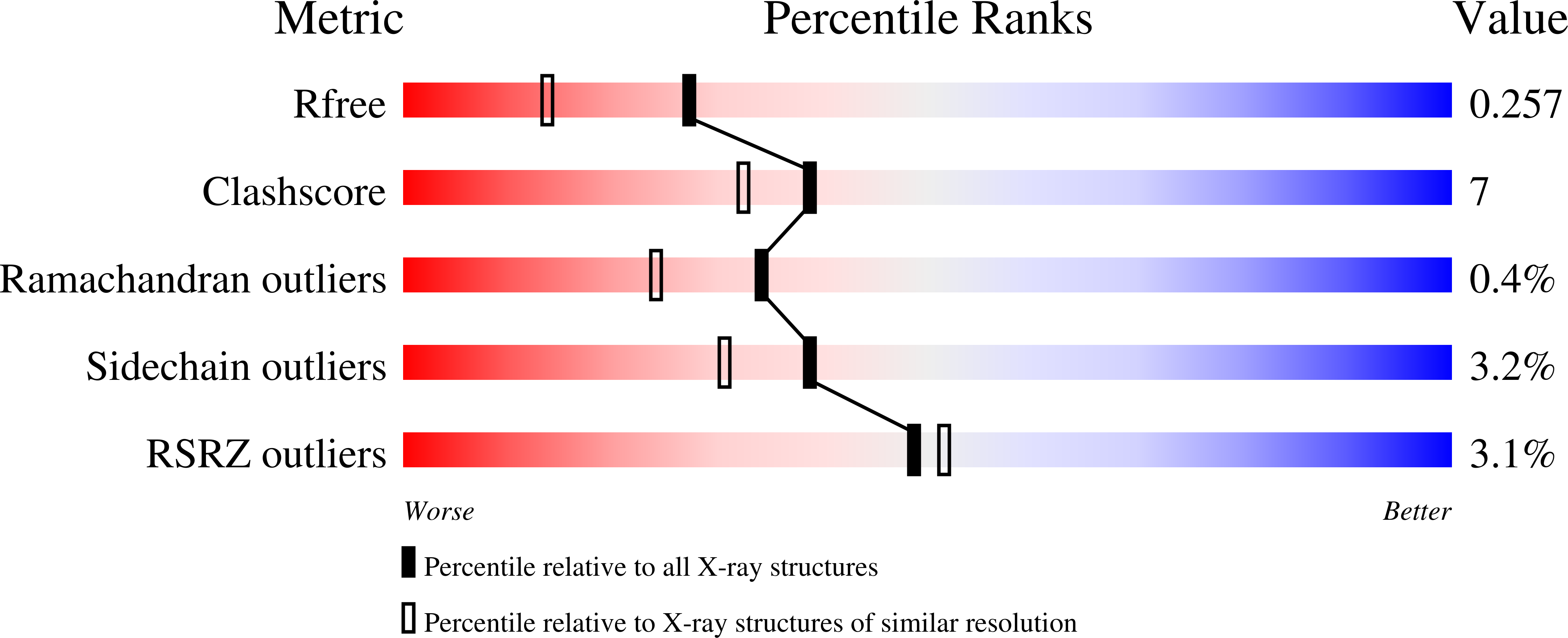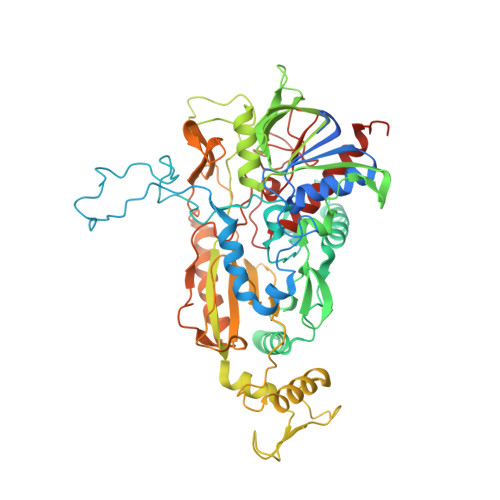H-bonding and positive charge at the N5/O4 locus are critical for covalent flavin attachment in trametes pyranose 2-oxidase.
Tan, T.C., Pitsawong, W., Wongnate, T., Spadiut, O., Haltrich, D., Chaiyen, P., Divne, C.(2010) J Mol Biol 402: 578-594
- PubMed: 20708626
- DOI: https://doi.org/10.1016/j.jmb.2010.08.011
- Primary Citation of Related Structures:
3LSH, 3LSI, 3LSK, 3LSM - PubMed Abstract:
Flavoenzymes perform a wide range of redox reactions in nature, and a subclass of flavoenzymes carry covalently bound cofactor. The enzyme-flavin bond helps to increase the flavin's redox potential to facilitate substrate oxidation in several oxidases. The formation of the enzyme-flavin covalent bond--the flavinylation reaction--has been studied for the past 40 years. For the most advocated mechanism of autocatalytic flavinylation, the quinone methide mechanism, appropriate stabilization of developing negative charges at the flavin N(1) and N(5) loci is crucial. Whereas the structural basis for stabilization at N(1) is relatively well studied, the structural requisites for charge stabilization at N(5) remain less clear. Here, we show that flavinylation of histidine 167 of pyranose 2-oxidase from Trametes multicolor requires hydrogen bonding at the flavin N(5)/O(4) locus, which is offered by the side chain of Thr169 when the enzyme is in its closed, but not open, state. Moreover, our data show that additional stabilization at N(5) by histidine 548 is required to ensure high occupancy of the histidyl-flavin bond. The combination of structural and spectral data on pyranose 2-oxidase mutants supports the quinone methide mechanism. Our results demonstrate an elaborate structural fine-tuning of the active site to complete its own formation that couples efficient holoenzyme synthesis to conformational substates of the substrate-recognition loop and concerted movements of side chains near the flavinylation ligand.
Organizational Affiliation:
Division of Biochemistry, School of Biotechnology, Royal Institute of Technology, Albanova University Center, Roslagstullsbacken 21, Stockholm, Sweden.
















